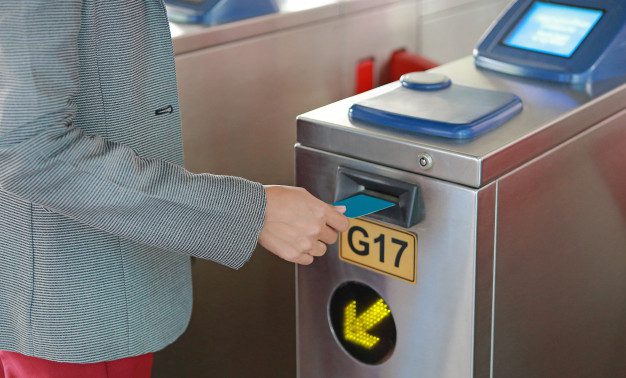This year’s Transport Ticketing Global brought together stakeholders in the transport and smart mobility ecosystems from around the world for two days of insightful keynotes, panels and discussions on the key trends in ticketing, including Account Based Ticketing (ABT), open payments, and Mobility-as-a-Service (MaaS).
Many topics were discussed by major players in the space—from payment schemes to operators and authorities—and a few key themes stood out.
Transport Ticketing: Bouncing Back from the Pandemic
The transport ticketing ecosystem has been faced with a number of unprecedented challenges over the past few years. The COVID-19 pandemic, and resulting lockdowns, caused passenger numbers to reduce significantly. The subsequent rise in home working and cost of living crisis have meant that passenger numbers have still not recovered to pre-pandemic levels.
However, transit operators and authorities have been resilient in ensuring they continue to provide a vital public service. They have adapted to new passenger behaviors by implementing innovative ticketing solutions that offer increased fare flexibility to meet the needs of their network. This has led to a general optimism regarding the future of the transit ecosystem, with passengers now presented with ticketing solutions that make public transport simpler, more cost-effective, and convenient.
Furthermore, the pandemic presented operators with an opportunity to carry out some of the long overdue upgrades to their networks. Passengers’ familiarity with EMV contactless payments meant that open loop systems based on such architectures could be seamlessly implemented, with remarkable usage rates. The prevailing view at Transport Ticketing Global is that this has set up many operators and authorities—especially those in less developed areas—with the future facing ticketing architectures they need to implement advanced and future-proof solutions.
Cross-Border Ticketing and Fare Integration
Another major theme that came out of the conference was the discussion around fare integration and cross-border ticketing. Passengers are increasingly calling for their journey to be made as seamless as possible. To meet this need, new Mobility-as-a-Service (MaaS) initiatives promise to deliver door-to-door travel. However, customer expectations now extend beyond the boundaries of travel within a single city. MaaS initiatives must consider a way to integrate operators and authorities from multiple cities and even countries, into one large-scale network to provide a smooth passenger journey.
This cross-border integration presents several complex challenges. Every transport operator and authority have specific governance models and want to retain control over their relationship with the passenger. When creating a MaaS system at such a scale, the number of stakeholders all aiming to own that relationship grows to include multiple local governments, various solution providers and payments providers. In addition, fare structure and logic may be different in each location, increasing the complexity of meeting interoperability requirements and making pricing harder for travelers to understand.
Discussions at the conference did not lead to predictions of disruptive technologies that would simplify these large-scale network integrations in the short term. Therefore, the primary focus remains on the customer experience. We expect fare integration to be a focal point for networks looking to implement ABT and MaaS in the coming years, with an emphasis on enhancing payment choices.
The Ongoing Digitization Movement
While digitization of ticketing is nothing new, it’s important that the transport ticketing ecosystem continues to recognize that the way we handle money is changing. Fewer people are using cash for any sort of payment, and transport ticketing must adapt to this.
To meet this demand, many operators and authorities are swapping legacy smartcard-based systems, that require users to add credit at a machine, for mTicketing. This gives those utilizing solutions such as ABT a new and integrated way to store and manage passenger data and travel tendencies by leveraging the capabilities of the user’s smartphone. This also supports the wider trend of dematerialization, as less smartcards are being produced.
However, as this digitization trend continues, it is imperative that no passenger is left behind. Delegates at the conference were mindful that unbanked passengers or those without smartphones still represent a notable demographic within public transport users. Such individuals may not be able to access ticketing if it is purely based on EMV open loop. Therefore, any digitized system must still have provisions in place to make sure these individuals are not excluded.
Finding the Right Transport Ticketing Solution for Your Network
Transport Ticketing Global highlighted the exciting direction that transport ticketing is heading in. The main themes of upgraded architectures, MaaS and the trend towards digitization were accompanied by discussions around longer-term projects to enrich ticketing. Facial recognition tools to authenticate a passenger’s right to travel, and utilizing the geolocation features of a passenger’s smartphone were both proposed as innovative case studies. However, each of these still have a long way to go until they can reach widespread adoption due to considerations around consumer privacy.
The conference has highlighted that the ticketing ecosystem is undergoing rapid change. New technologies, infrastructures, and integration projects shall be delivered at a faster pace than in the past.
Ranald Freestone, Senior AFC Consultant at FIME, and Vincent Dulaquais, Smart Mobility Senior Business Development Manager at FIME, co-authored the article with Arnaud Depaigne, Smart Mobility Product Manager at FIME.
